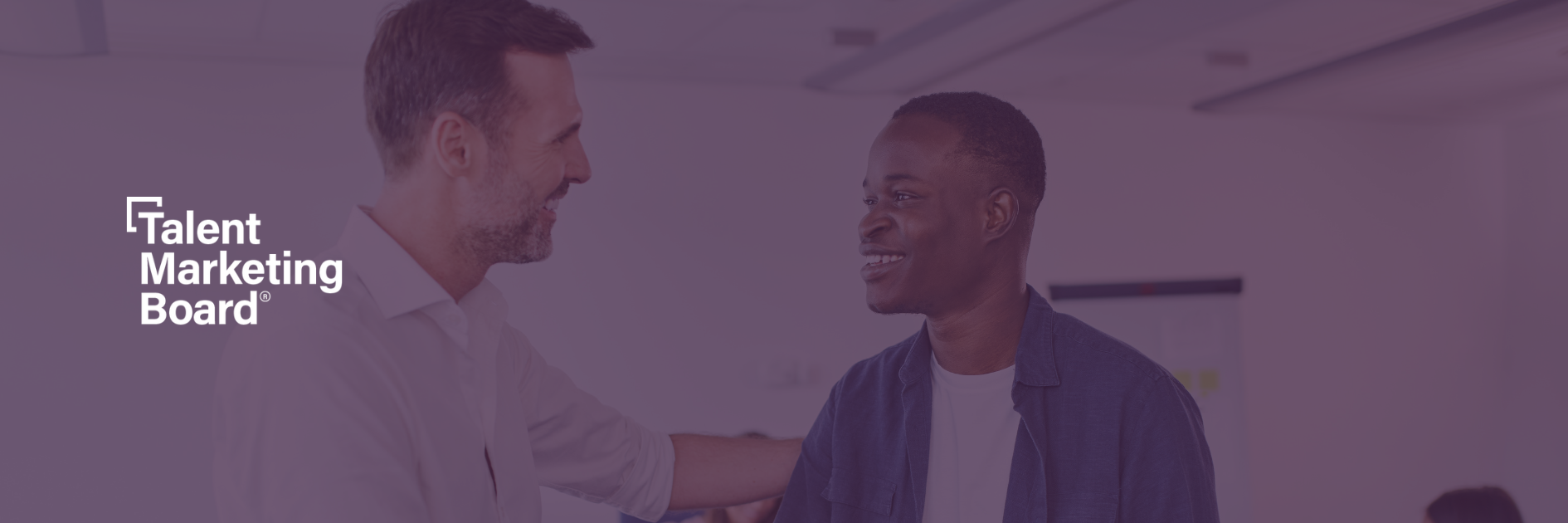Key takeaways:
- Invest in comprehensive training and education: Provide diversity training for all employees — focusing on individual career goals — to foster an inclusive culture throughout the organization.
- Empower underrepresented talent: Track talent progression and offer specialized training for leaders to support the career advancement of underrepresented groups.
- Strategize long-term career development: Utilize data for succession planning, offer internal mentorship programs, and explore external resources to provide inclusive career pathways for all employees.
Creating inclusive career pathways is a strategic focus area for organizations aiming to enhance diversity, equity, and inclusion (DEI) in their workforce.
In a recent Board.org panel discussion on how DEI and talent marketing teams can collaborate to improve recruitment success, our Board Members discussed the importance of collaboration to create career development opportunities for diverse talent.
Here are the best practices shared for ensuring your organization establishes inclusive career pathways.
1. Training and Education are Cornerstones for Inclusive Career Pathways
Paul Hamilton, former LCBO Director of Talent Acquisition and DEI Board Alumnus, discussed how training and education lay the foundation for inclusive career pathways.

Oftentimes, we try to apply a one-size-fits-all approach, and it doesn’t work anymore. You have to meet the individual employees where they’re at, and understand what they’re trying to achieve and what their career goals are.
Paul Hamilton, former LCBO Director of Talent Acquisition and DEI Board Alumnus
He noted how this extends beyond DEI and TA teams and why it’s essential to ensure business leaders receive diversity training to foster an inclusive culture from the top down.
“What often happens is you bring in someone from a diverse community, but there are no resources or support within that organization to support their career growth,” Paul said. “When that happens, you see early attrition. You see folks leaving the organizations because what you sold them upfront doesn’t align with what’s on the back end.”
By tracking what employees value most in educational programs, he added how organizations can better support growth and retention.
“Oftentimes, we try to apply a one-size-fits-all approach, and it doesn’t work anymore,” Paul said. “You have to meet the individual employees where they’re at, and understand what they’re trying to achieve and what their career goals are.”
2. Support Underrepresented Talent with Career Advancement
Kim Hawkins, VP and Diversity, Equity, and Inclusion Recruiting Program Manager at U.S. Bank, highlighted the importance of setting a foundation with training to ensure everyone understands your organization’s goals.
She emphasized the need to track talent progression and create opportunities for advancement, particularly for underrepresented groups.
Kim asked, “If you’re attracting the right talent to your organization, how are they progressing through their journeys? How are they moving up? Are they being retained? Are they being promoted into higher level positions?”
According to Kim, specialized training helps track and understand how team members progress in their careers. She also explained how training for hiring managers and business leaders increases awareness and interactions among underrepresented talent and the barriers they face in advancing in their careers.
3. Establish Long-Term Strategic Goals and Career Development Opportunities
Carolyn Larson, Senior Program Manager of Recruitment Marketing and DEI at C.H. Robinson, emphasized the need for long-term strategic planning in creating inclusive career pathways.
She highlighted the need for strategic discussions around representation in leadership and the utilization of data for understanding career trajectories and succession planning.

Internal mentorship opportunities are massive for not only showcasing development opportunities, but also networking and learning about different opportunities.
Carolyn Larson, Senior Program Manager of Recruitment Marketing and DEI at C.H. Robinson
Carolyn also discussed how development opportunities don’t always need to be granular or budget-restricted, and highlighted the significance of internal mentorship programs for showcasing growth opportunities and networking.
“Internal mentorship opportunities are massive for not only showcasing development opportunities, but also networking and learning about different opportunities,” Carolyn said. “Even if the goal of an individual isn’t necessarily to advance at that time, it’s still a unique opportunity to learn about how their skills might fit into future roles.”
Kim also discussed the significance of mentoring, sponsorships, and leadership development programs in advancing and retaining underrepresented talent within the organization.
“For underrepresented talent, it provides a way for them to have access to opportunities that they may not have otherwise encountered,” Kim said.
She highlighted the value of creating spaces where individuals can be supported and guided in advancing their careers.

Once you’ve attracted them and they’re in the organization, you provide these other ways and programs for them to advance and progress and, ultimately, stay.
Kim Hawkins, VP and Diversity, Equity, and Inclusion Recruiting Program Manager at U.S. Bank
Kim also explained that if formal mentoring opportunities aren’t available internally, organizations can leverage external resources like Menttium for mentoring and sponsorship support.
She also discussed the significance of leadership development programs, such as those offered by McKinsey, in providing underrepresented talent with access to opportunities for career advancement.
“Once you’ve attracted them and they’re in the organization, you provide these other ways and programs for them to advance and progress and, ultimately, stay,” Kim said.
4. ERGs Play a Critical Role in Supporting Inclusive Career Pathways
Our members all stated that employee resource groups (ERGs) are essential for providing a supportive environment where diverse talent can thrive.
Paul outlined four key areas where ERGs contribute significantly:
- Talent acquisition: ERGs offer valuable insights into diverse talent pools and can help create inclusive candidate experiences.
- Retention: By providing supportive communities, ERGs improve employee engagement and retention.
- Business insights: ERGs provide data on diverse markets, helping organizations better serve their customers and achieve business goals.
- Partnership and alignment: ERGs serve as platforms for partnership and alignment between DEI and talent marketing teams, creating a positive experience and supporting employee development.
“ERGs help acquire talent through understanding the diverse communities that are out there,” Paul said. “They support retention of new employees by providing a supportive community. ERGs provide valuable insights in terms of diverse markets that your organization may want to go after.”
Get More Leadership Insights on Creating Inclusive Career Pathways in the Talent Marketing Board
While ensuring all team members in your organization have equal opportunities to advance their careers can be a daunting task, you don’t have to do it alone.
Members in the Talent Marketing Board meet weekly to share actionable insights and benchmark their top initiatives without any vendors or consultants present.
Learn how membership can give you the insights needed to advance your strategy today.


